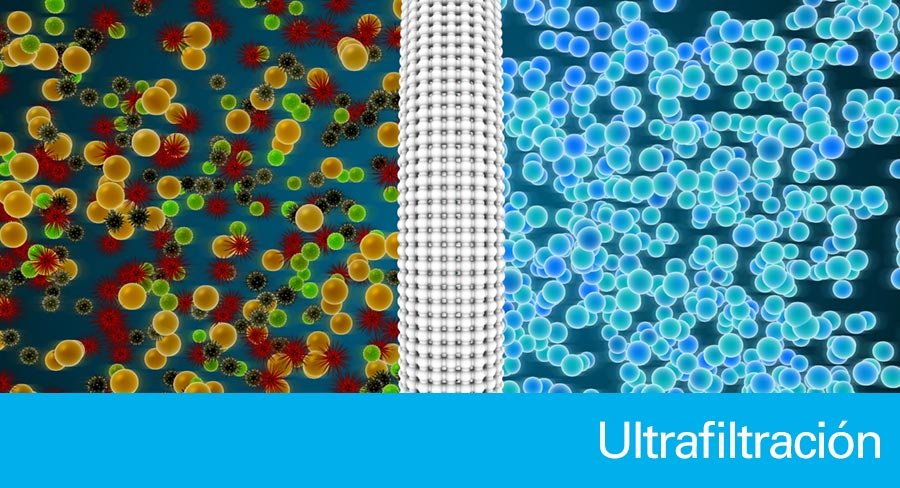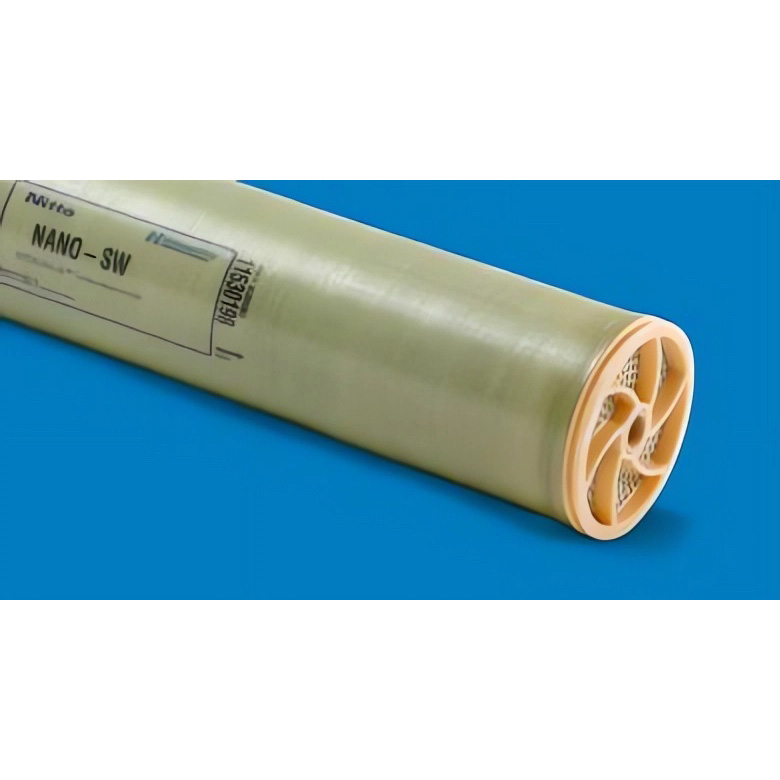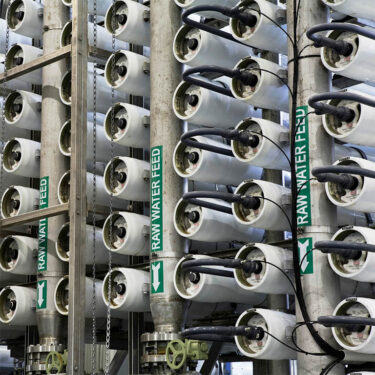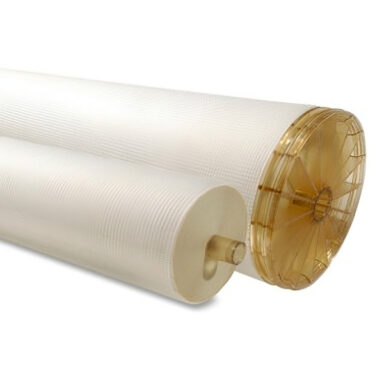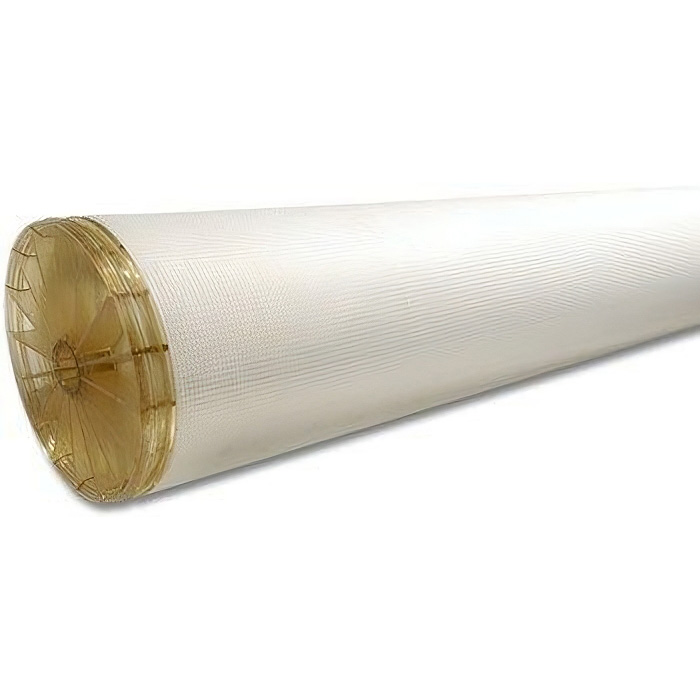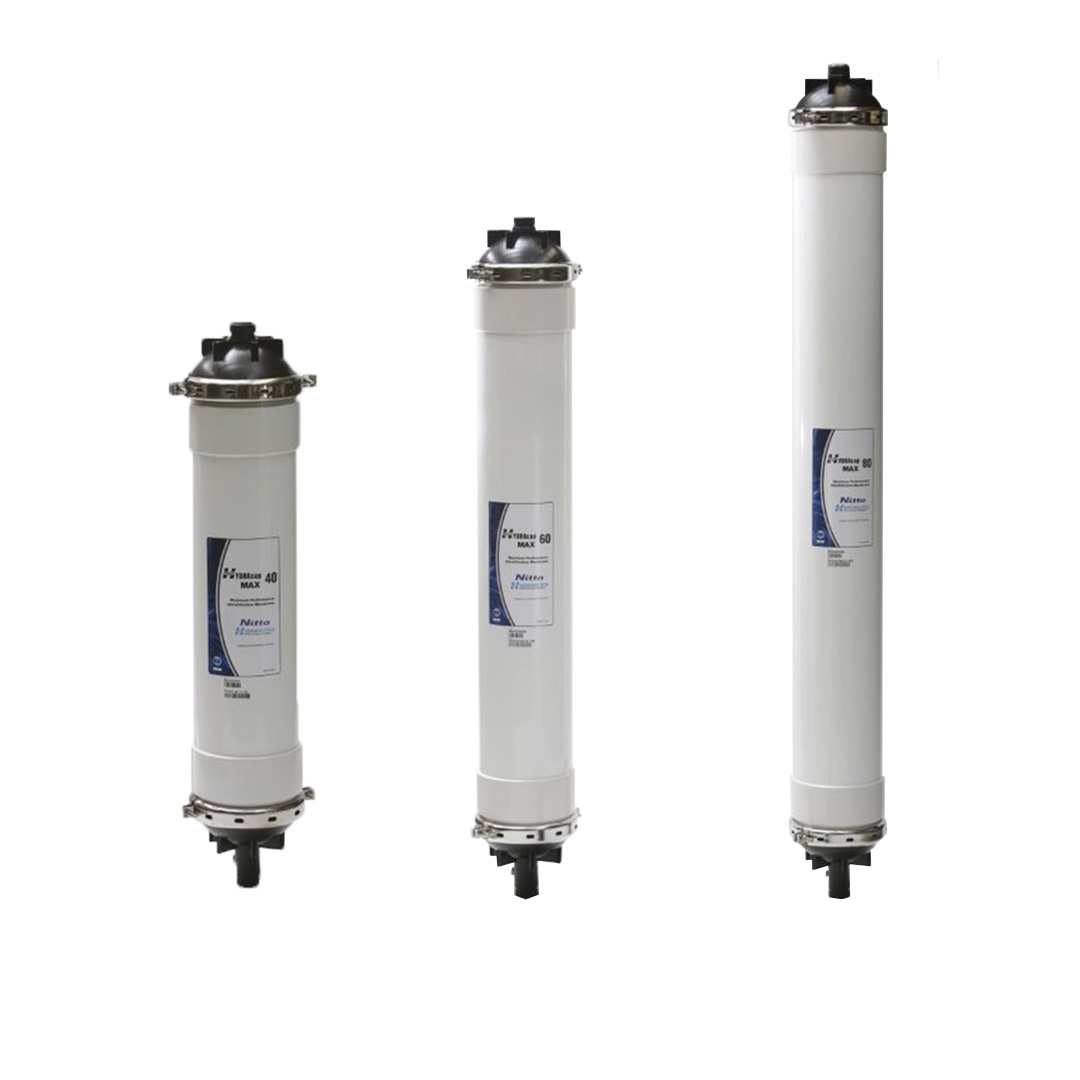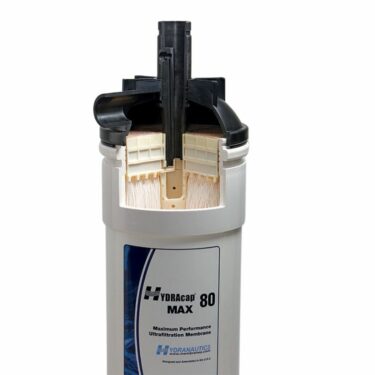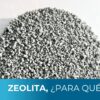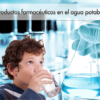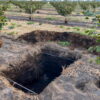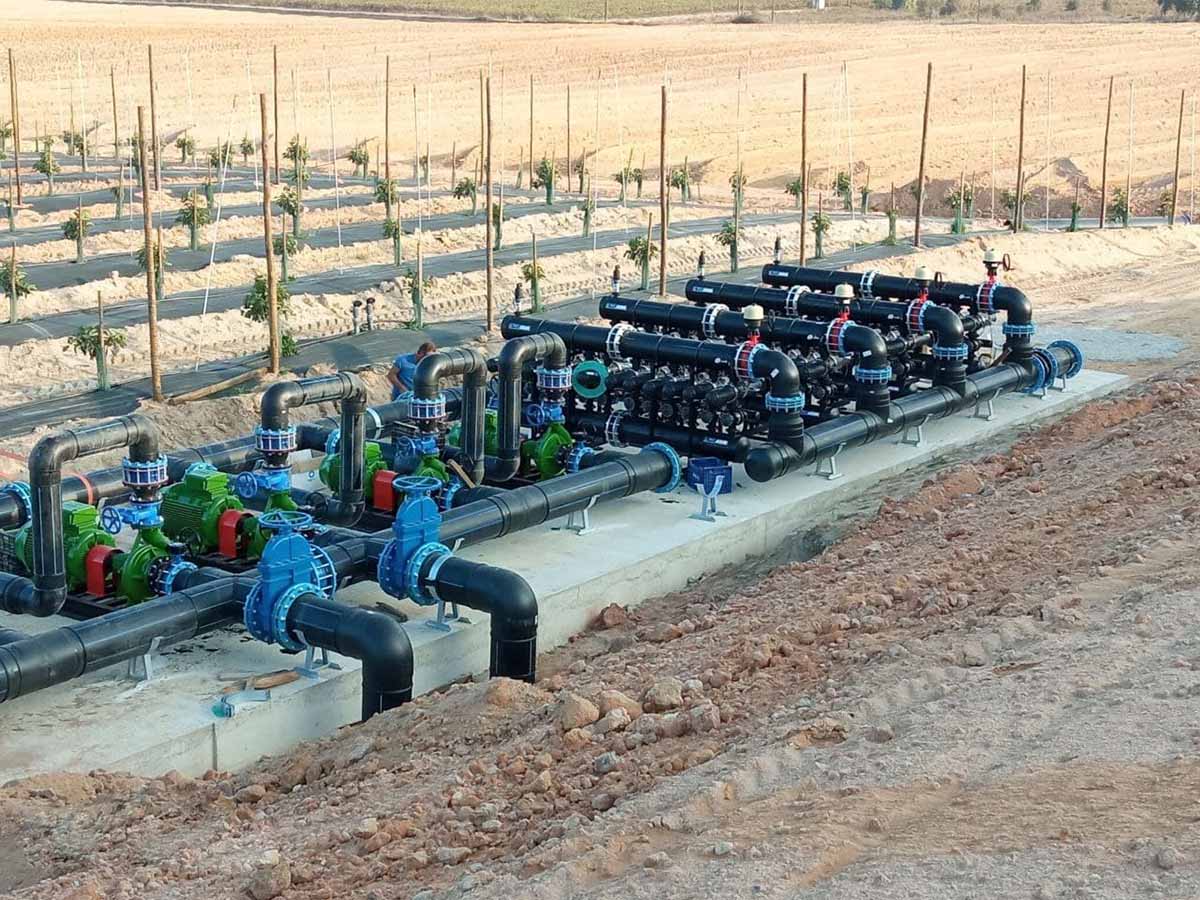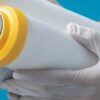What is Ultrafiltration?
Ultrafiltration is a separation process based on a porous membrane with openings between 0.01 and 0.1 microns.
Ultrafiltration membranes are more closed compared to microfiltration, but more open than nanofiltration and reverse osmosis. The membranes work with low pressure, which results in lower operating costs. In addition, they are very effective as a pretreatment for reverse osmosis, and also have a backwashing system, which gives them a longer life span.
How does it work?
Ultrafiltration uses hydrostatic pressure to force water through a semi-permeable membrane. The type of membranes that make up ultrafiltration can be spiral wound using cross-flow separation, hollow fiber and tubular membranes. The ultrafiltration system works to remove contaminants with molecular weights from 300 to 500’000 Dalton (1).
The membranes remove very small particles, such as chlorine-resistant organisms, bacteria, organics, sediments, high molecular weight solutes and other suspended solids. As in microfiltration, ultrafiltration is mostly applied as a pretreatment for reverse osmosis, as well as a stand-alone treatment.
What are the applications of ultrafiltration?
Ultrafiltration has a wide field of application, functioning as pretreatment and in processes where water of excellent quality is necessary. It is also a fundamental part in the separation of food grade emulsions, specifically in milk, whey, cheese, etc. processes.
Some examples of its main applications are:
- Whey protein concentration.
- Concentration of vegetable proteins such as oats, canola or soy.
- Starch recovery
- Water treatment as a substitute for deep bed and sand filters.
- Clarification of fruit juices, wines and beer
- Starch recovery
We detail the 5 main applications of ultrafiltration:
- Drinking and wastewater treatment: Ultrafiltration is a commonly used technique to remove particles, microorganisms and macromolecules, making it an ideal choice for drinking and wastewater treatment.
- Dairy industry: In the dairy industry, ultrafiltration is used in a wide range of applications such as milk protein standardization for cheese production, protein concentration and permeate decalcification, as well as for lactose reduction in milk.
- Purification and concentration of macromolecules and proteins: Ultrafiltration membranes have the unique ability to purify, concentrate and fractionate a wide range of macromolecules and proteins, through a physical membrane barrier, ensuring very consistent rejection and flux performance.
- Replacement of traditional sand filters and media filtration: Ultrafiltration technology can be superior to traditional sand filters and media filtration, which require consistent raw water quality to deliver a quality effluent, which is not always possible. In addition, they provide an absolute barrier.
- Separations based on solute size: Ultrafiltration membranes perform separations based on solute size. They have retention ratings of 1-5000 K for more or less spherical solutes and can retain solutes 10-1000 Å or larger in diameter (approximately 300-1000 KDa), such as colloids, large molecules and nanoparticles.
Classification of separation membranes according to their pore openings
- Microfiltration: 0.1 to 1 micron (μm)
- Ultrafiltration: 0.01 to 0.1 μm
- Nanofiltration: 0.001 to 0.01 μm
- Reverse osmosis (hyperfiltration): 0.0001 to 0.001 μm
Remember that:
1 mm = 1000 μm
1 μm = 1000 nanometers (nm)
1 nm = 10 Angstroms (Å)
References
- Cheryan, M. MEMBRANE SEPARATIONS | Ultrafiltration. Reference Module in Chemistry, Molecular Sciences and Chemical Engineering. s.l. : Elsevier, 2013.
- Ultrafiltration – Wikipedia
- The Ultimate on Ultrafiltration – IFT.org
- Applications & Case Studies: Ultrafiltration Technology
- Ultrafiltration (UF) – DuPont
Last modification: March 26, 2021
Share:
If you need more information, please contact us.
Some products that may interest you
-
ESNA, NANO and HYDRACoRe Nanofiltration Membrane (NF)
Add to quote -
Hydranautics SWC4 SWC5 and SWC6 Reverse Osmosis Seawater Membranes SWC5 and SWC6
Add to quote -
CPA2, CPA3, CPA5, CPA6 and CPA7 Hydranautics composite polyamide membranes
Add to quote -
RO-4040-FF and RO-390-FF FilmTec DOW DuPont RO-4040-FF and RO-390-FF membranes
Add to quote -
HSRO-390-FF FilmTec DOW 8×40″ Membrane HSRO-390-FF FilmTec DOW 8×40″ Membrane
Add to quote -
Membrane HSRO-4040-FF FilmTec DOW 4×40″
Add to quote -
SanRO HS-4 and SanRO HS-8 4×40″ and 8×40″ Hydranautics Membrane
Add to quote -
Ultrafiltration Membrane HYDRAcap MAX 40, 60 and 80 Hydranautics
Add to quote

